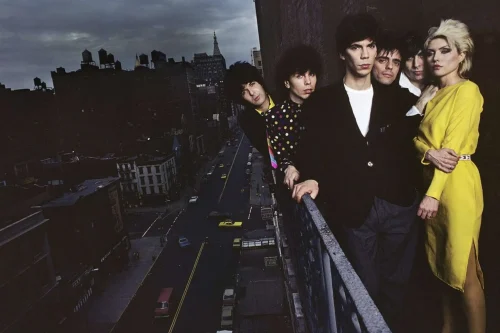In the mid-1970s, amidst the gritty backdrop of New York City, a band emerged that would not only define the sound of an era but also encapsulate its vibrant spirit of rebellion and artistic innovation. This band was Blondie, formed by its charismatic frontwoman Debbie Harry and guitarist Chris Stein, along with an eclectic group of musicians who together crafted a sound that was as diverse as the city from which they hailed. Rising to fame with their blend of punk, disco, and pop, Blondie’s music transcended the boundaries of genre, mirroring the melting pot of influences that characterized New York City itself.
The 1970s in New York City were a time of significant cultural and economic tumult. The city was on the verge of bankruptcy, crime rates were high, and urban decay was widespread. Yet, it was within this chaos that a vibrant underground art and music scene thrived, becoming a crucible for innovation and rebellion against the mainstream. Punk rock, with its raw energy and disdain for the polished commercialism of the music industry, found its American home in the dingy clubs of the Lower East Side. CBGB and Max’s Kansas City became the epicenters of a movement that would influence the trajectory of music history.
Amid this cultural upheaval, Blondie stood out not only for their music but also for their embodiment of the era’s ethos. Their sound, a fusion of punk’s raw edge with the danceable rhythms of disco and the catchy hooks of pop, captured the eclectic nature of New York City’s cultural landscape. Beyond their musical contributions, the band’s image—led by Debbie Harry’s iconic style—and their engagement with the city’s art scene, through collaborations with artists and participation in the burgeoning world of music videos, positioned them at the forefront of a movement that blurred the lines between music, art, and fashion.
The Birth of Blondie: Origins and Early Years
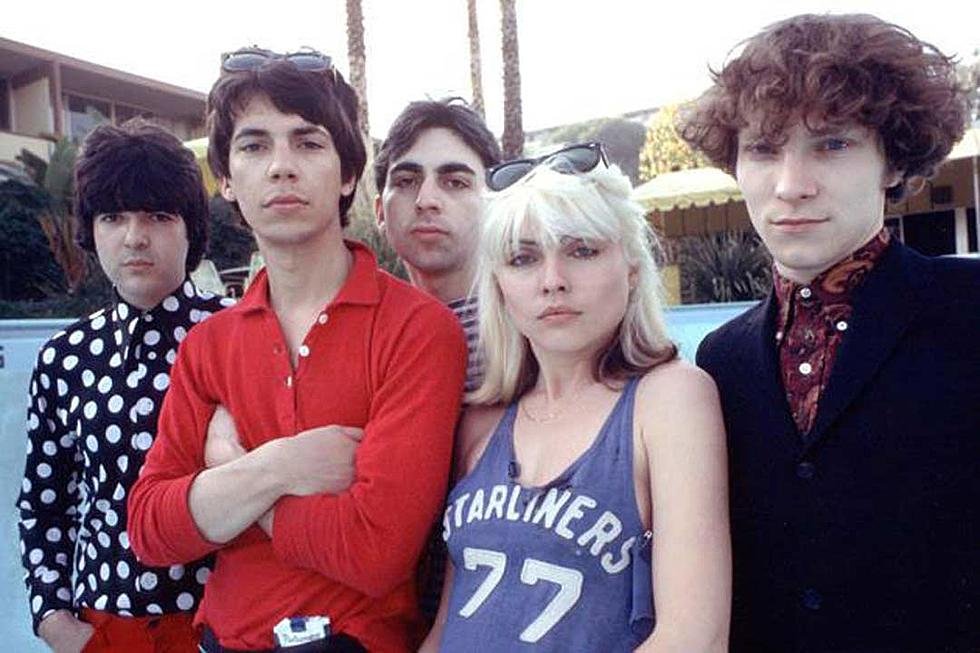
Photo By Michael Ochs Archives, Getty Images
In the bustling streets of New York City, where the echoes of cultural revolution were in the air, Blondie was born, not just as a band but as a phenomenon that would soon leave an indelible mark on the music scene. The year was 1974, a time when the city’s gritty landscape served as a fertile ground for the seeds of punk and new wave to grow. It was in this environment that Debbie Harry, a former waitress and Playboy Bunny with a background in the arts, and Chris Stein, a visionary guitarist, united their creative forces to form a band. Initially called “Angel and the Snake” before settling on the iconic name Blondie, the group aimed to blend the raw, unfiltered spirit of punk with the melodic sensibilities of pop and rock.
The key members who joined Debbie and Chris in this venture brought with them a diverse range of musical backgrounds and artistic influences, enriching the band’s sound. Clem Burke, the dynamic drummer with a flair for blending punk speed with disco grooves, Gary Valentine, the bassist who contributed to the early songwriting efforts, and Jimmy Destri, the keyboardist who added a layer of electronic texture to the band’s sound, were among the original lineup. This eclectic mix of talents and backgrounds mirrored the diversity of New York City itself, making Blondie a microcosm of the city’s cultural melting pot.
The Burgeoning Punk scene
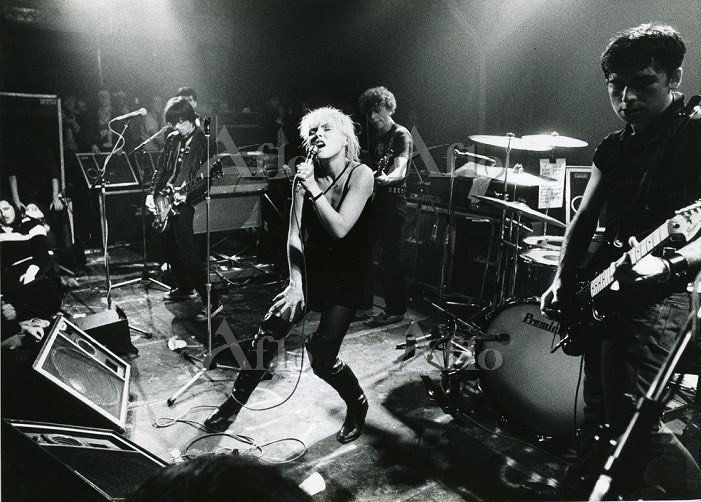
Photo By Gie Knaeps.
Blondie’s initial gigs were humble yet impactful, taking place in some of the most iconic venues of the punk scene, including CBGB and Max’s Kansas City. These venues were not just music halls; they were the breeding grounds for a cultural revolution, where the likes of the Ramones, Television, and Talking Heads were also making their mark. Blondie’s performances stood out for their energy, the magnetic presence of Debbie Harry, and their ability to infuse pop sensibilities into the punk ethos. Their music, characterized by catchy melodies, edgy guitar riffs, and Harry’s distinctive voice, quickly garnered attention, setting them apart in a scene that thrived on raw energy and minimalism.
The band’s integration into the burgeoning punk scene was not just through their music but also through their engagement with the broader cultural movements of the time. The visual aspect of Blondie, led by Harry’s iconic fashion sense and the band’s collaboration with artists and photographers, cemented their status as not just musicians but cultural icons. Their ability to cross over into the mainstream without losing their punk roots was a testament to their innovative approach to music and art, reflecting the eclectic and ever-changing landscape of New York City.
As Blondie’s fame began to rise, their influence extended beyond the confines of the punk scene, marking the beginning of a journey that would see them become one of the most influential bands of their time. Their early years laid the foundation for a career that would be marked by innovation, resilience, and an unwavering commitment to breaking boundaries, mirroring the restless spirit of New York City itself.
New York City in the 1970s: A Melting Pot of Rebellion and Creativity
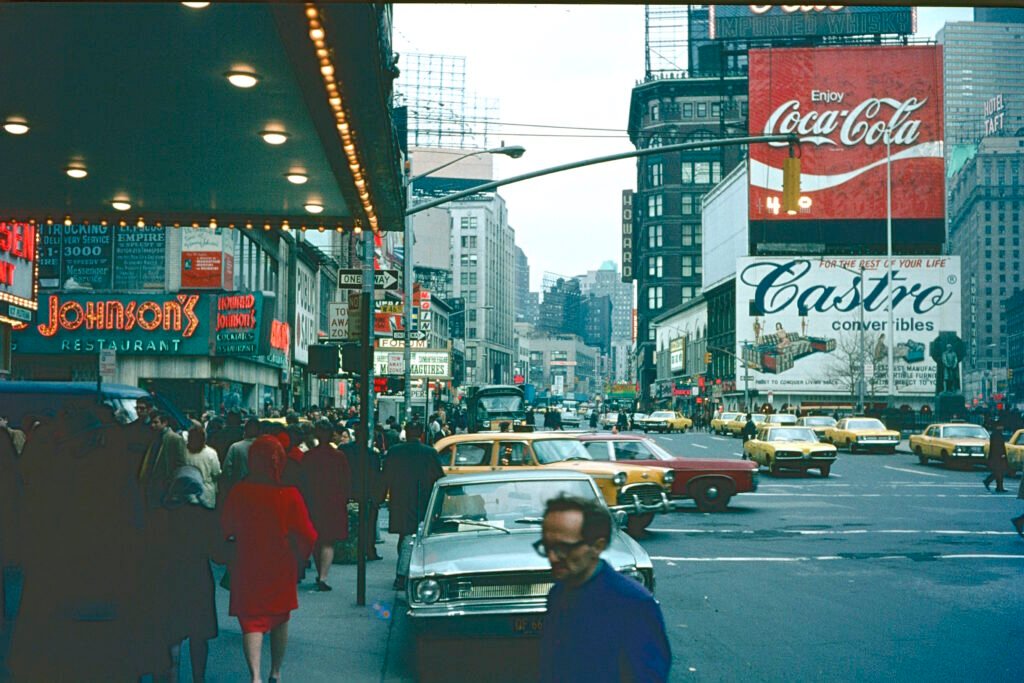
New York City in the 1970s was a study in contrasts: a metropolis grappling with economic downturn, urban decay, and rising crime, yet simultaneously bursting at the seams with vibrant cultural and artistic expression. This period, often characterized by financial crisis—infamously epitomized by the Daily News headline “Ford to City: Drop Dead”—saw the city teetering on the brink of bankruptcy. However, it was within this chaos and struggle that New York’s creative communities found a fertile ground for innovation, giving birth to movements that would leave a lasting impact on global culture.
The Punk Movement: Origins, Key Figures, and Venues
The punk movement emerged as a direct response to the economic hardships and societal frustrations of the time. It was more than just a musical genre; it was a cultural rebellion against the establishment, expressing the angst and disillusionment of a generation. Rooted in simplicity and raw emotion, punk music stood in stark contrast to the era’s prevalent disco and progressive rock, rejecting elaborate production in favor of straightforward, aggressive sounds.
CBGB (Country, BlueGrass, and Blues) and Max’s Kansas City were the epicenters of this movement. Originally envisioned as venues for different musical genres, they quickly became the launching pads for punk in America. CBGB, in particular, is credited with the birth of American punk, hosting early shows by bands like the Ramones, Television, Patti Smith, and, of course, Blondie. These venues were more than just clubs; they were communal spaces where musicians, artists, and fans could converge, creating a sense of identity and community within the chaos of the city.
The Art Scene: Graffiti, Street Art, and the Crossover between Visual Arts and Music
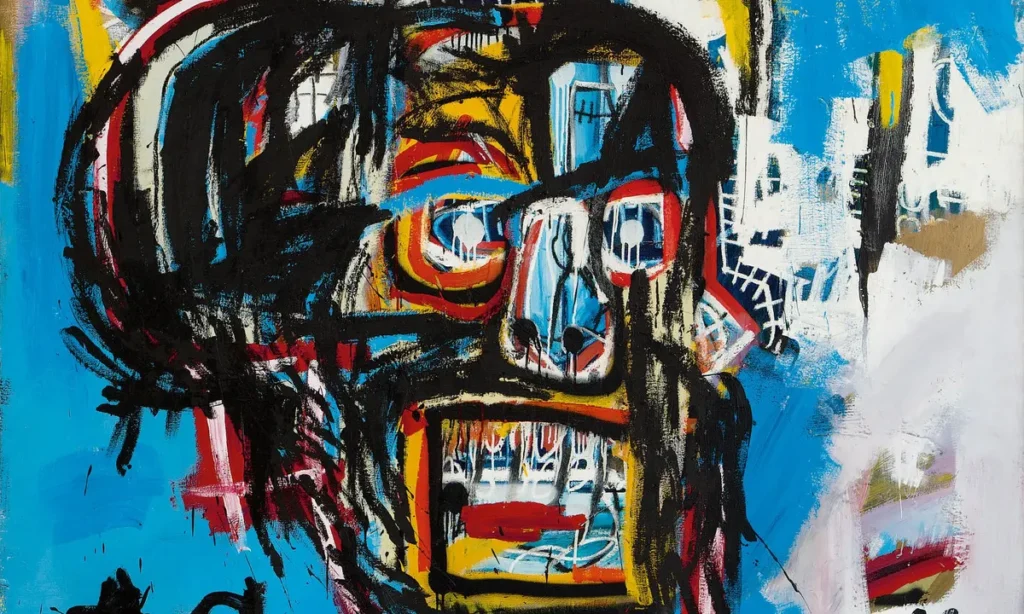
Photo by Sotheby’s/EPA
Parallel to the rise of punk, the visual art scene in New York was undergoing its own revolution. The economic downturn led to widespread urban decay, with abandoned buildings and subway cars becoming canvases for graffiti artists. What was once dismissed as vandalism soon gained recognition as a legitimate art form, reflecting the city’s social and political turmoil. Artists like Jean-Michel Basquiat and Keith Haring began their careers in this street art scene, blurring the lines between high art and urban expression.
This era also saw a significant crossover between the visual arts and music. Punk bands and visual artists operated in a symbiotic relationship, with album covers, concert posters, and music videos becoming essential elements of a band’s identity. Andy Warhol’s involvement with The Velvet Underground in the late 60s set a precedent for this collaboration, which continued into the 70s with artists and musicians mingling and inspiring each other. The downtown art scene became intertwined with the music scene, with figures like Debbie Harry and Chris Stein of Blondie actively participating in both worlds, further illustrating the creative fusion that defined New York City during this time.
In the crucible of New York City’s 1970s economic and social turmoil, a powerful culture of rebellion and creativity emerged. Punk music and street art became expressions of resistance, capturing the city’s resilience and its inhabitants’ desire to redefine their world. This period laid the groundwork for a cultural legacy that would influence future generations, making New York City synonymous with innovation, artistic freedom, and a relentless spirit of rebellion.
Musical Innovation and Style: Blondie’s Sonic Identity
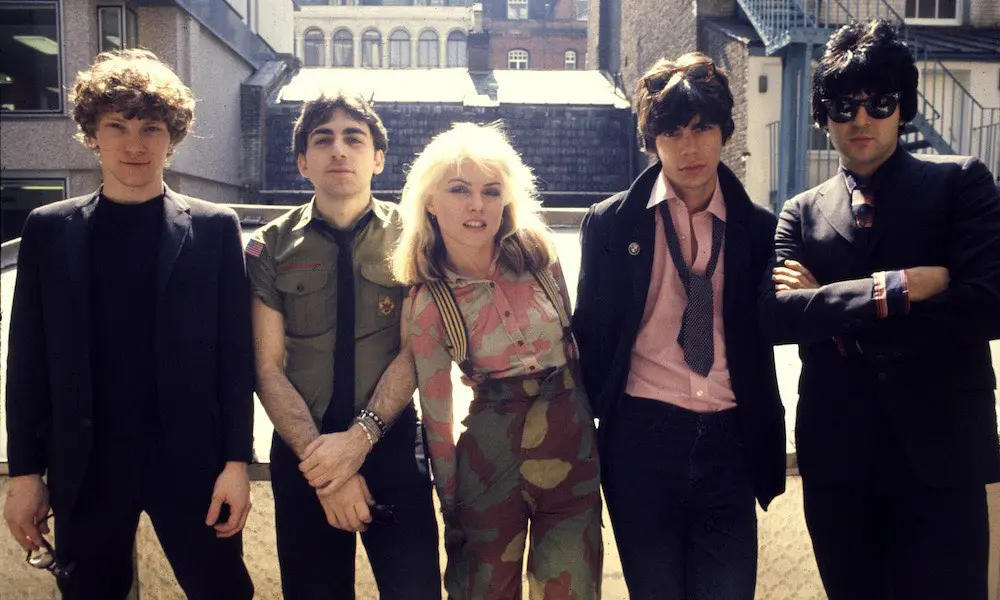
Photo By Chris walter/WireImage.
Blondie’s musical journey is a vivid tapestry woven with threads of punk, new wave, disco, and even early elements of rap, showcasing an unparalleled adaptability and innovation that mirrored the eclectic cultural landscape of New York City in the 1970s and beyond. From their formation through their rise to international stardom, Blondie’s sound evolved, reflecting both their diverse influences and their environment’s vibrant, rebellious spirit.
The Fusion of Influences and the Evolution of Sound
At the heart of Blondie’s sonic identity was the unique blend of musical styles that each member brought to the band. Debbie Harry’s voice, both sultry and assertive, floated effortlessly over Chris Stein’s gritty guitar riffs, while Clem Burke’s dynamic drumming combined the high energy of punk with the rhythm and smoothness of disco beats. This amalgamation of sounds was not just a reflection of the band members’ varied tastes but also an embodiment of New York City’s diverse musical influences—from the raw energy of punk emanating from the CBGB stage to the discotheques that kept the city dancing through the night.
Capturing the Eclectic Nature of NYC’s Cultural Landscape
Blondie’s ability to traverse genres with ease made them the perfect chroniclers of New York City’s cultural milieu. Their music was a soundtrack to the city’s complexity, capturing its contrasts and contradictions. Tracks like “Heart of Glass” seamlessly blended disco’s lush, danceable rhythms with punk’s raw edge, breaking genre boundaries and challenging the purist attitudes prevalent in the punk scene at the time. Similarly, “Rapture” introduced many to the nascent hip-hop culture brewing in the city’s boroughs, showcasing Blondie’s knack for synthesizing emerging trends into their own distinct sound.
Key Tracks and Albums: Defining the Sound and Contribution to Punk and New Wave
Blondie’s self-titled debut album in 1976 marked their entry into the music scene, with tracks like “X Offender” and “Rip Her to Shreds” capturing the raw energy of punk while hinting at the band’s broader musical palette. However, it was their third album, “Parallel Lines” (1978), that catapulted them to international fame. Featuring hits like “Heart of Glass” and “One Way or Another,” the album was a masterclass in genre fusion, blending punk, pop, and disco into a cohesive sound that was accessible yet edgy.
“Parallel Lines” not only solidified Blondie’s place in music history but also reflected the shifting dynamics of the late ’70s and early ’80s music scene, as punk began to give way to the more polished sounds of new wave. Blondie’s ability to evolve while maintaining their core identity demonstrated a deep understanding of the cultural shifts occurring around them, making them both participants in and observers of the era’s musical transformation.
Visual Aesthetics and Fashion: Blondie as Style Icons
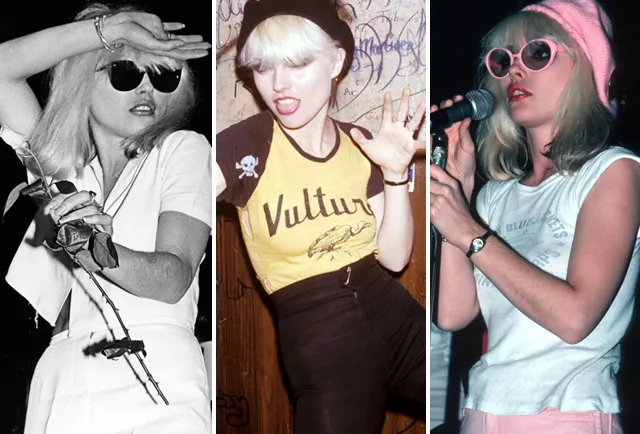
Image from Vanity Fair.
Blondie’s impact on the cultural landscape of the late 20th century extends far beyond their musical contributions. The band, with Debbie Harry at the forefront, also left an indelible mark on the worlds of fashion and visual aesthetics, embodying the spirit of their era through a distinctive style that blended punk’s raw edge with elements of high fashion and art. This fusion of influences not only solidified their status as style icons but also highlighted the intimate relationship between music and visual arts during a time of immense creativity and experimentation.
The Reflection of Contemporary Fashion and Art
Blondie’s visual aesthetic was a vivid reflection of the eclectic nature of New York City’s fashion and art scenes in the 1970s and 1980s. The band’s style, characterized by a mix of punk’s DIY ethos with the glamour of disco and the avant-garde, mirrored the city’s cultural dynamism. This blend of influences was evident in their album covers, music videos, and public appearances, which often featured bold graphics, vibrant colors, and a mix of textures and styles that defied conventional fashion norms.
Debbie Harry’s Iconic Style and Influence on Fashion Trends
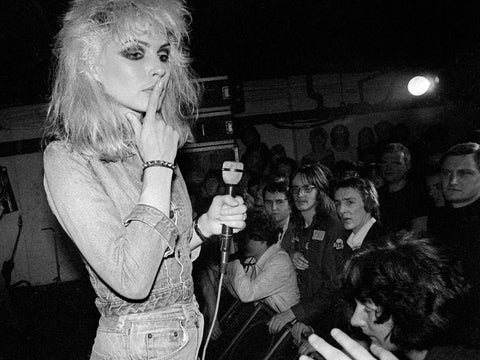
Debbie Harry, in particular, emerged as a fashion icon, her look embodying the fusion of streetwise cool with chic sophistication. Her bleached blonde hair, often styled in an undone manner, became synonymous with the band’s name and image. Harry’s fashion choices—ranging from ripped t-shirts and leather jackets to elegant dresses and designer ensembles—played a significant role in influencing fashion trends, showcasing the versatility and appeal of combining seemingly disparate elements into a cohesive and striking look.
Harry’s ability to blend punk’s rebelliousness with elements of glamour and femininity challenged traditional notions of style and beauty, inspiring a generation to experiment with their own personal expression through fashion. Her influence is still evident today, with many designers and stylists citing her as a muse for collections that seek to capture a blend of toughness and elegance.
Collaboration with Artists and Designers
Blondie’s foray into the visual arts was not limited to their personal style but extended into collaborations with artists and designers, further cementing the band’s role in the intersection of music and visual arts. The iconic cover of their “Parallel Lines” album, featuring the band in matching black and white attire against a geometric background, is a testament to their engagement with visual aesthetics and design principles.
Moreover, Debbie Harry and Chris Stein’s collaborations with artists such as Andy Warhol and Jean-Michel Basquiat bridged the gap between the music and art worlds, highlighting the synergies between these creative fields. These collaborations were not merely promotional but were deeply rooted in mutual admiration and the desire to explore the intersections of sound, image, and identity.
Lyricism and Themes: A Reflection of Urban Life
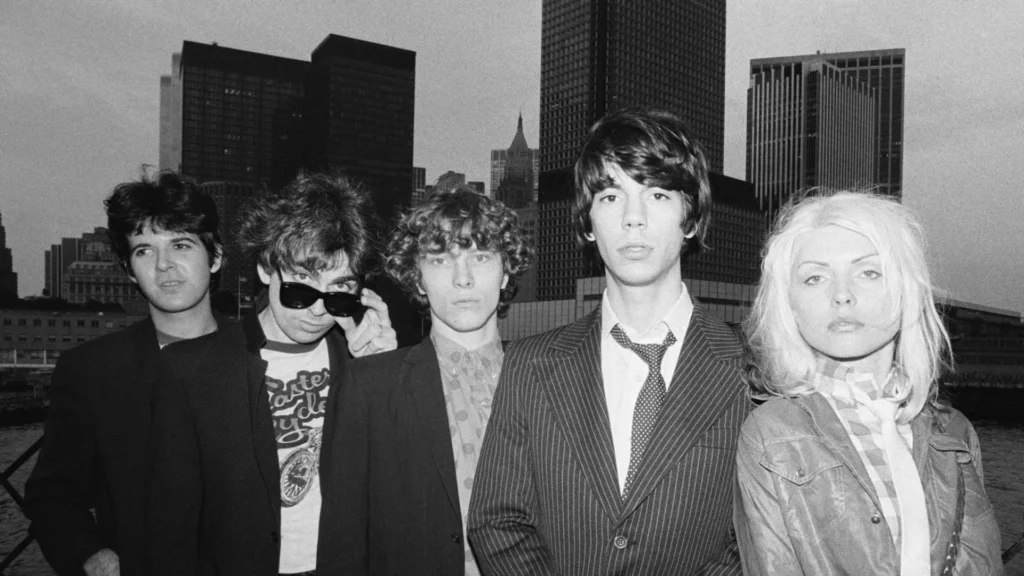
Blondie’s lyrics weave a rich tapestry that reflects the multifaceted experiences of urban life in New York City, capturing its vibrancy, struggles, and the diverse identities that populate its streets. Through their songs, Blondie not only chronicled the zeitgeist of their era but also explored themes of love, identity, and social commentary, all set against the backdrop of the city that never sleeps. Their lyrical narratives are a testament to the band’s deep connection with New York, offering listeners a glimpse into the city’s complex character.
Analysis of Themes and Narratives
Blondie’s songwriting is marked by a keen observation of the urban landscape, with lyrics that often touch on the paradoxes of city life—the isolation amid crowds, the blend of the mundane with the extraordinary, and the constant search for connection in a fast-paced environment. Songs like “In the Flesh” and “Heart of Glass” delve into the intricacies of love and relationships, capturing the emotional highs and lows with a candidness that resonates with the listener’s own experiences.
Moreover, tracks such as “Rip Her to Shreds” showcase Blondie’s knack for social commentary, using sharp wit and satire to address themes of fame, media, and the superficiality that can pervade the music industry and societal expectations of women. This blend of personal storytelling and broader societal observation makes their music relatable yet thought-provoking, highlighting the band’s lyrical depth.
Encapsulating the Experiences and Struggles of New York City Life
Perhaps one of Blondie’s most significant contributions to music is their ability to encapsulate the essence of New York City life in their lyrics. Songs like “Union City Blue” capture the longing and dreams of the city’s inhabitants, set against the backdrop of its industrial landscape. The band’s music acts as a sonic diary, chronicling the everyday experiences and the unique energy of the city, from the hustle of the streets to the quiet moments of introspection in the midst of urban chaos.
Portrayal of Gender, Identity, and the Urban Experience
Blondie’s exploration of gender and identity in their lyrics was groundbreaking, with Debbie Harry’s persona challenging the conventional expectations of female musicians at the time. Through both her visual presentation and the lyrical content of songs like “Picture This” and “Call Me,” Harry subverted gender norms, presenting an image of female autonomy and strength that was both empowering and provocative.
The band’s songs often navigated the complexities of identity and self-expression within the urban experience, reflecting the diverse tapestry of New York City’s inhabitants. Their music offered a voice to those navigating their identities in a city known for its liberating anonymity and boundless possibilities, making Blondie’s lyrics a powerful commentary on personal and collective identity.
Legacy and Influence: Blondie’s Enduring Impact
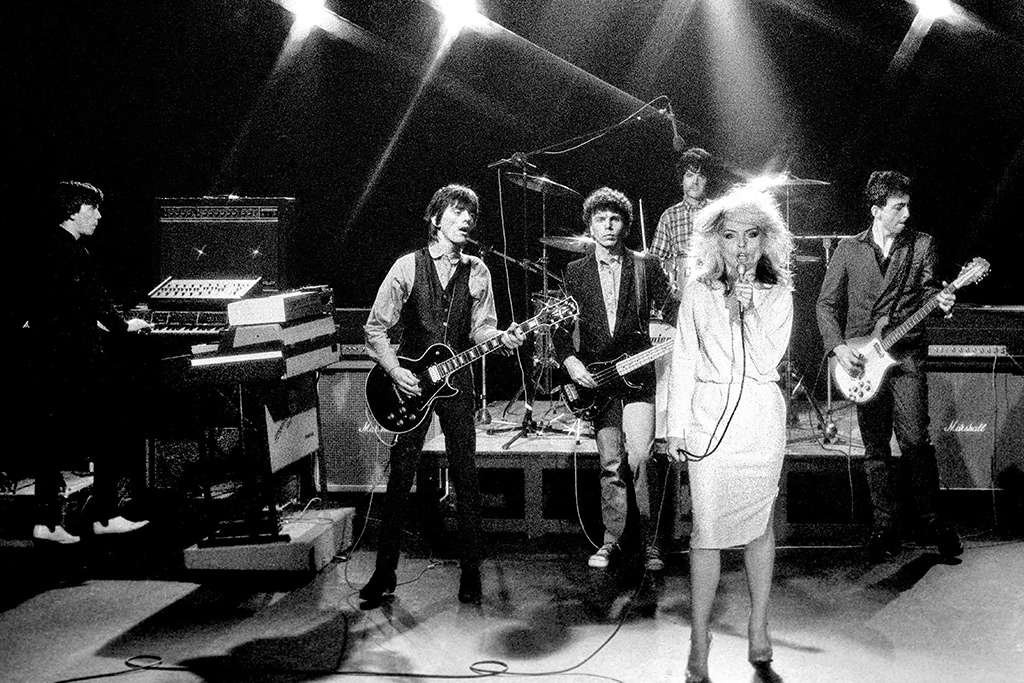
Blondie’s indelible mark on the music industry extends far beyond their groundbreaking hits and iconic style. Their influence permeates various musical genres and generations, showcasing the band’s role as pioneers of punk, new wave, and even early hip-hop influences. Blondie’s legacy is a testament to their innovative spirit, proving that their contribution to music and culture continues to resonate with artists and fans alike.
Influence on Subsequent Musical Acts and Genres
Blondie’s eclectic sound and willingness to experiment with different musical styles have made them a significant influence on a wide array of artists across genres. From punk to pop, and indie to electronic, musicians cite Blondie’s innovative approach to music-making as a blueprint for breaking genre constraints. Bands and artists from Madonna to No Doubt and even more contemporary acts like Lady Gaga and Billie Eilish have acknowledged Blondie’s impact on their work, pointing to Debbie Harry’s strong, multifaceted persona and the band’s fusion of styles as key inspirations.
Popularizing Punk and New Wave Beyond New York City
Blondie played a crucial role in bringing punk and new wave to mainstream attention, not only in the United States but around the world. Their chart-topping hits like “Heart of Glass” and “Call Me” introduced a broader audience to the energy and ethos of punk, while their polished production and catchy melodies made new wave more accessible to the masses. By achieving commercial success without sacrificing their underground roots, Blondie helped pave the way for other bands in these genres to find global audiences, thereby solidifying punk and new wave as significant movements in music history.
Contributions to the Global Perception of New York City’s Artistic and Cultural Dynamism
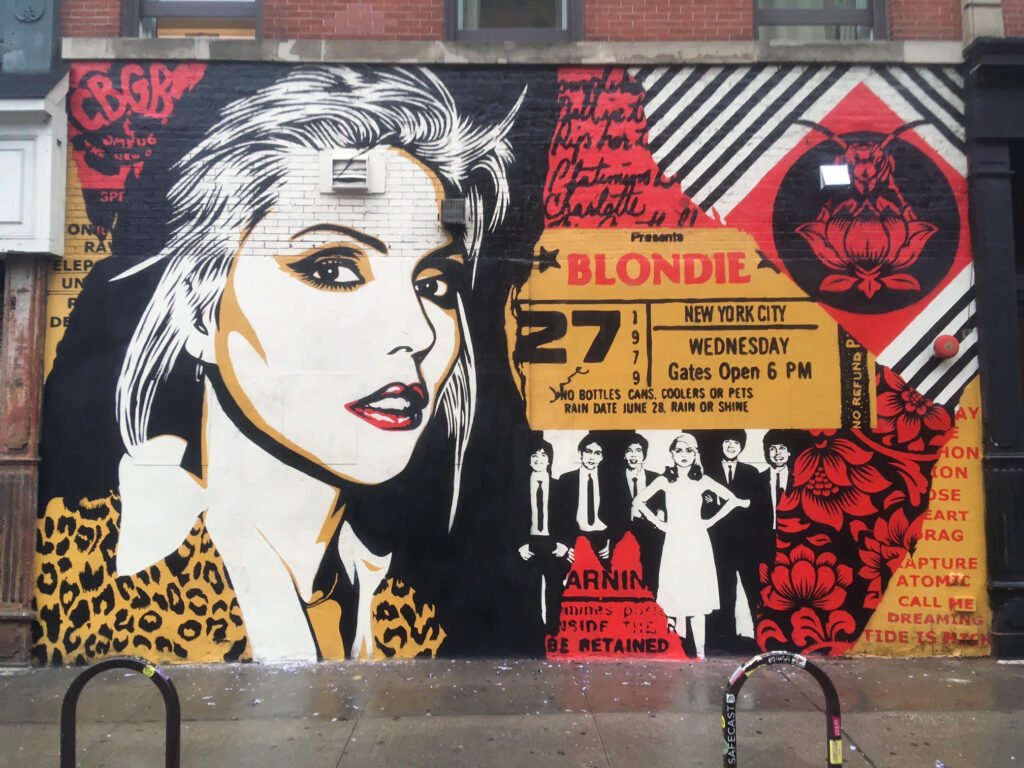
Blondie’s music and image are inextricably linked to New York City, capturing its gritty glamour and eclectic culture. Through their international success, they contributed to the global perception of New York as a hub of artistic innovation and cultural dynamism. The band’s narrative is a part of the larger story of New York in the 1970s and 1980s—a place where creativity thrived against a backdrop of urban challenges. Blondie’s ability to translate the city’s energy into their music and persona helped to romanticize New York’s chaotic landscape, enticing future generations to explore its cultural richness.
Moreover, their engagement with the city’s art scene, through collaborations with visual artists and participation in the burgeoning world of music videos, further highlighted New York’s status as a cultural melting pot. Blondie’s legacy, therefore, is not just musical but also cultural, painting a picture of New York City that continues to inspire artists, musicians, and dreamers from around the world.
In conclusion, Blondie’s enduring impact on music and culture is a reflection of their innovative spirit, diverse influences, and the unique time and place from which they emerged. Their legacy is a reminder of the transformative power of music to reflect and shape the zeitgeist, influencing generations of artists and fans while celebrating the vibrancy of urban life. Through their contributions, Blondie has ensured that their spirit—much like the city that defined them—remains alive, pulsating through the heart of contemporary music and culture.
